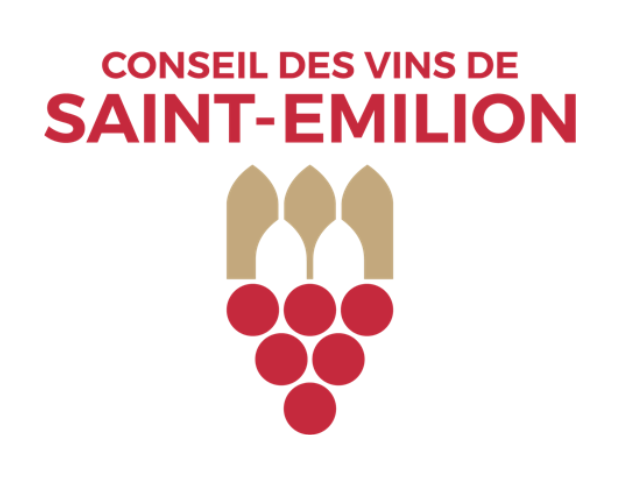
Official release of the new wine Classification of Saint-Emilion
Official release (08/09/22) of the new Classification of Saint-Emilion
71 Grands Crus Classés and 14 Premiers Grands Crus Classés distinguished in the 7th Saint-Emilion classification
“We would like to congratulate all the properties that feature in this new classification of Saint- Emilion wines and the people, who work on them, because this is truly an outstanding human adventure that relies on teamwork. Without a terroir and committed women and men, there can be no great wine. There is no doubt that this new classification will continue to lend prominence to the name of Saint-Emilion abroad.” (Jean-François Galhaud, President of the Saint-Emilion Wine Council)
It’s with great pleasure and pride that the Saint-Émilion Wine Council presents the new Crus de Saint-Emilion classification, carried out under the auspices of INAO (Institut National de l’Origine et de la Qualité) and the help of Bureau Veritas Certification France.
The Saint-Emilion Wine Classification is unique in the world. Introduced in 1955 under the auspices of INAO, it is the only classification that is revised every ten years. 2022 is the 7th classification. It therefore encourages every estate, candidate or already promoted, continuously to strive for excellence, vintage after vintage. “Even after 70 years since its creation, the Saint- Émilion classification has not changed in its reliability, its vision and modernity“.
What are the criteria?
Today a new page of the great history of our appellations has been written. After long months of painstaking work, the 7-member Classification Commission has finalised the list of crus classés in the Saint-Emilion Grand Cru AOC for the next 10 years.
While it assigns significant importance to the wines and tasting them, the classification also takes into account their reputation, the renown of their terroirs and the exemplary way in which the vineyards are run. Thousands of details, some of them tiny, are taken into account, which together contribute to the excellence of each wine.
- For “Grands Crus Classés”: 50 % Tasting, 20 % Reputation (advertising, distribution and value), 20 % Terroirs (property tax base, uniformity, quality of terroirs), 10 % Methods used in winegrowing and oenology
- For “Premiers Grands Crus Classés”: 50 % Tasting, 35 % Reputation (advertising, distribution and value), 10 % Terroirs (property tax base, uniformity, quality of terroirs), 5 % Methods used in winegrowing and oenology.
A minimum total score of 14/20 was necessary to get the rank of Grand Cru Classé. A minimum total score of 16/20 was necessary for the title of Premier Grand Cru Classé. Important detail: only the candidates already admitted as a Grand Cru Classé could be examined for Premier Grand Cru Classé.
The classification rewards the labours of the women and men, who have worked for decades to maintain their wine’s classification or raise it. It has been loyal to its principles and fundamentally stable since 1955, and thus offers wine drinkers all over the world a guarantee of lasting exceptional quality.
The new classification distinguishes 85 properties:
- 2 Premiers Grands Crus Classés A: Château FIGEAC (distinction A) et Château PAVIE (distinction A)
- 12 Premiers Grands Crus Classés: Château BEAU-SEJOUR BECOT, Château BEAUSEJOUR HERITIERS DUFFAU LAGARROSSE, Château BELAIR MONANGE, Château CANON, Château CANON LA GAFFELIERE, Château LARCIS DUCASSE, Château PAVIE MACQUIN, Château TROPLONG MONDOT, Château TROTTEVIEILLE, Château VALANDRAUD, CLOS FOURTET, LA MONDOTTE
- 71 Grands Crus Classés: Château BADETTE, Château BALESTARD LA TONNELLE, Château BARDE-HAUT, Château BELLEFONT-BELCIER, Château BELLEVUE, Château BERLIQUET, Château BOUTISSE, Château CADET-BON, Château CAP DE MOURLIN, Château CHAUVIN, Château CLOS DE SARPE, Château CORBIN, Château CORBIN MICHOTTE, Château COTE DE BALEAU, Château CROIX DE LABRIE, Château DASSAULT, Château DE FERRAND, Château DE PRESSAC, Château DESTIEUX, Château FAUGERES, Château FLEUR CARDINALE Château FOMBRAUGE, Château FONPLEGADE, Château FONROQUE, Château FRANC MAYNE, Château GRAND CORBIN, Château GRAND CORBIN-DESPAGNE,, Château GRAND MAYNE, Château GUADET, Château HAUT-SARPE, Château JEAN FAURE, Château LA COMMANDERIE, Château LA CONFESSION, Château LA COUSPAUDE, Château LA CROIZILLE, Château LA DOMINIQUE, Château LA FLEUR MORANGE, Château LA MARZELLE, Château LA SERRE, Château LA TOUR FIGEAC, Château LANIOTE, Château LARMANDE, Château LAROQUE, Château LAROZE, Château LE CHATELET, Château LE PRIEURE, Château MANGOT, Château MONBOUSQUET, Château MONTLABERT, Château MONTLISSE, Château MOULIN DU CADET, Château PEBY FAUGERES, Château PETIT FAURIE DE SOUTARD, Château RIPEAU, Château ROCHEBELLE, Château ROL VALENTIN, Château SAINT-GEORGES (COTE PAVIE) Château SANSONNET, Château SOUTARD, Château TOUR BALADOZ, Château TOUR SAINT-CHRISTOPHE, Château VILLEMAURINE, Château YON-FIGEAC, CLOS BADON THUNEVIN, CLOS DE L’ORATOIRE, CLOS DES JACOBINS, CLOS DUBREUIL, CLOS SAINT-JULIEN, CLOS SAINT-MARTIN, COUVENT DES JACOBINS, LASSEGUE
Congratulations to all of them !

